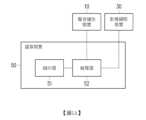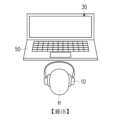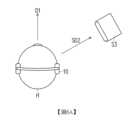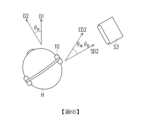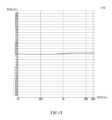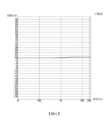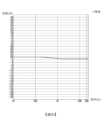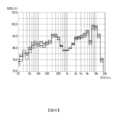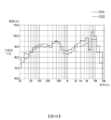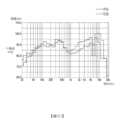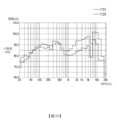TWI885865B - Audio effect adjustment method and computing apparatus used for audio effect adjustment - Google Patents
Audio effect adjustment method and computing apparatus used for audio effect adjustmentDownload PDFInfo
- Publication number
- TWI885865B TWI885865BTW113114783ATW113114783ATWI885865BTW I885865 BTWI885865 BTW I885865BTW 113114783 ATW113114783 ATW 113114783ATW 113114783 ATW113114783 ATW 113114783ATW I885865 BTWI885865 BTW I885865B
- Authority
- TW
- Taiwan
- Prior art keywords
- sound
- signal
- orientation
- parameter
- head
- Prior art date
Links
Images
Landscapes
- Stereophonic System (AREA)
Abstract
Description
Translated fromChinese本發明是有關於一種聲音訊號的處理技術,且特別是有關於一種音效調整方法及用於音效調整的運算裝置。The present invention relates to a sound signal processing technology, and in particular to a sound effect adjustment method and a computing device for sound effect adjustment.
空間音效是將聲音訊號轉移到多個虛擬揚聲器所構成的環繞音場,調整來自不同方向的虛擬聲音訊號的響應及延遲,並據以轉移成立體音場的聲音訊號。值得注意的是,上述空間音效的設定通常是假設使用者配戴耳機且頭部朝向電腦的螢幕中心的情境。然而,當頭部沒有朝向螢幕中心時,上述針對空間音效的調整將不再適用。Spatial sound effects are the process of transferring sound signals to a surround sound field formed by multiple virtual speakers, adjusting the response and delay of virtual sound signals from different directions, and transferring them to a stereo sound field. It is worth noting that the above spatial sound effect settings are usually based on the assumption that the user is wearing headphones and their head is facing the center of the computer screen. However, when the head is not facing the center of the screen, the above adjustments for spatial sound effects will no longer apply.
本發明提供一種音效調整方法及用於音效調整的運算裝置,可適用於頭部的姿態變化的音場調整。The present invention provides a sound effect adjustment method and a computing device for sound effect adjustment, which can be applied to sound field adjustment of head posture changes.
本發明實施例的音效調整方法,適用於處理器實現。音效調整方法包括下列步驟:決定聲音訊號的聲音特徵對應的音源方向,其中聲音特徵相關於聲音訊號的振幅及相位中的至少一者,且聲音訊號是對位於音源方向的位置的聲音來源所錄製的;決定頭部的姿態變化,其中姿態變化包括頭部由第一朝向旋轉至第二朝向的旋轉角度,且頭部用於配戴聲音播放裝置;以及依據音源方向與第二朝向的方向差異調整聲音訊號的聲音特徵,其中方向差異為音源方向及修正的第二朝向的夾角,修正的第二朝向是由音源方向經姿態變化後的朝向,且調整的聲音訊號用於透過聲音播放裝置播放。The sound effect adjustment method of the embodiment of the present invention is suitable for implementation by a processor. The sound effect adjustment method includes the following steps: determining the sound source direction corresponding to the sound feature of the sound signal, wherein the sound feature is related to at least one of the amplitude and phase of the sound signal, and the sound signal is recorded for the sound source located in the direction of the sound source; determining the posture change of the head, wherein the posture change includes the rotation angle of the head from a first orientation to a second orientation, and the head is used to wear a sound playback device; and adjusting the sound feature of the sound signal according to the direction difference between the sound source direction and the second orientation, wherein the direction difference is the angle between the sound source direction and the modified second orientation, and the modified second orientation is the orientation of the sound source direction after the posture change, and the adjusted sound signal is used to be played through the sound playback device.
本發明實施例的用於音效調整的運算裝置包括儲存器及處理器。儲存器用以儲存程式碼。處理器耦接儲存器。處理器經配置用以:決定聲音訊號的聲音特徵對應的音源方向,其中聲音特徵相關於聲音訊號的振幅及相位中的至少一者,且聲音訊號是對位於音源方向的位置的聲音來源所錄製的;決定頭部的姿態變化,其中姿態變化包括頭部由第一朝向旋轉至第二朝向的旋轉角度,且頭部用於配戴聲音播放裝置;以及依據音源方向與第二朝向的方向差異調整聲音訊號的聲音特徵,其中方向差異為音源方向及修正的第二朝向的夾角,修正的第二朝向是由音源方向經姿態變化後的朝向,且調整的聲音訊號用於透過聲音播放裝置播放。The computing device for adjusting sound effects of the embodiment of the present invention includes a memory and a processor. The memory is used to store program codes. The processor is coupled to the memory. The processor is configured to: determine the sound source direction corresponding to the sound characteristics of the sound signal, wherein the sound characteristics are related to at least one of the amplitude and phase of the sound signal, and the sound signal is recorded for the sound source located in the direction of the sound source; determine the posture change of the head, wherein the posture change includes the rotation angle of the head from a first orientation to a second orientation, and the head is used to wear a sound playback device; and adjust the sound characteristics of the sound signal according to the direction difference between the sound source direction and the second orientation, wherein the direction difference is the angle between the sound source direction and the modified second orientation, the modified second orientation is the orientation of the sound source direction after the posture change, and the adjusted sound signal is used to be played through the sound playback device.
基於上述,本發明實施例的音效調整方法及用於音效調整的運算裝置可將音源方向作為參考方向,依據這參考方向決定頭部旋轉後的修正朝向,並據以提供適合於這修正朝向的音效調整。藉此,可提供合適的空間音效變化,並給予使用者更為身歷其境的聽覺體驗。Based on the above, the sound effect adjustment method and the computing device for sound effect adjustment of the embodiment of the present invention can use the direction of the sound source as a reference direction, determine the corrected direction after the head is rotated according to the reference direction, and provide sound effect adjustment suitable for the corrected direction accordingly. In this way, appropriate spatial sound effect changes can be provided, giving the user a more immersive auditory experience.
為讓本發明的上述特徵和優點能更明顯易懂,下文特舉實施例,並配合所附圖式作詳細說明如下。In order to make the above features and advantages of the present invention more clearly understood, embodiments are specifically cited below and described in detail with reference to the accompanying drawings.
圖1A是依據本發明一實施例的系統的元件方塊圖。請參照圖1A,系統包括聲音播放裝置10、影像擷取裝置30及運算裝置50。FIG1A is a block diagram of a system according to an embodiment of the present invention. Referring to FIG1A , the system includes a
聲音播放裝置10可以是耳機或穿戴式播放裝置。圖1B是依據本發明一實施例說明一應用情境的示意圖。請參照圖1B,聲音播放裝置10可供使用者的頭部H配戴。聲音播放裝置10的(入耳式或耳道式)喇叭單體可朝向頭部H上的雙耳。在一實施例中,聲音播放裝置10用以播放聲音訊號。The
影像擷取裝置30可以是相機、攝影機或具有影像擷取功能的電路。請參照圖1B,影像擷取裝置30內建或外接影像擷取裝置30。影像擷取裝置30的鏡頭可朝向頭部H。在一實施例中,影像擷取裝置30用以拍攝影像。以圖1B為例,影像擷取裝置30拍攝頭部,並據以產生頭部影像(即,擷取到頭部H的影像)。The
運算裝置50可以是智慧型手機、平板電腦、桌上型電腦、筆記型電腦、智慧型助理裝置、穿戴式裝置、智慧型電視或其他電子裝置。運算裝置50通訊連接於聲音播放裝置10及影像擷取裝置30。例如,裝載USB、UART或其他有線傳輸介面(圖未示),或裝載Wi-Fi、藍芽或其他無線通訊收發電路(圖未示),並據以傳送或接收訊號。例如,影像擷取裝置30將承載有影像的訊號傳送至運算裝置50,或運算裝置50將聲音訊號傳送至聲音播放裝置10。The
運算裝置50包括(但不僅限於)儲存器51及處理器52。The
儲存器51可以是任何型態的固定或可移動隨機存取記憶體(Radom Access Memory,RAM)、唯讀記憶體(Read Only Memory,ROM)、快閃記憶體(flash memory)、傳統硬碟(Hard Disk Drive,HDD)、固態硬碟(Solid-State Drive,SSD)或類似元件。在一實施例中,儲存器51用以儲存程式碼、軟體模組、組態配置、資料(例如,聲音訊號、頭部影像或演算法參數)或檔案,並待後文詳述其實施例。The
處理器52耦接儲存器51。處理器52可以是中央處理單元(Central Processing Unit,CPU)、圖形處理單元(Graphic Processing unit,GPU),或是其他可程式化之一般用途或特殊用途的微處理器(Microprocessor)、數位信號處理器(Digital Signal Processor,DSP)、可程式化控制器、現場可程式化邏輯閘陣列(Field Programmable Gate Array,FPGA)、特殊應用積體電路(Application-Specific Integrated Circuit,ASIC)、神經網路加速器或其他類似元件或上述元件的組合。在一實施例中,處理器52用以執行運算裝置100的所有或部份作業,且可載入並執行儲存器51所儲存的各程式碼、軟體模組、檔案及資料。在一實施例中,處理器52可控制影像擷取裝置30拍攝。在另一實施例中,處理器52可控制聲音播放裝置10的播放功能(例如,播放、暫停、切換曲目、快轉或倒轉)。在一些實施例中,處理器52的功能可透過軟體或晶片實現。The
針對應用情境,以圖1B為例,運算裝置50為筆記型電腦,且頭部H朝向筆記型電腦的顯示器。然而,使用者的位置及/或朝向還可能有其他變化。For the application scenario, taking FIG. 1B as an example, the
下文中,將搭配聲音播放裝置10、影像擷取裝置30及運算裝置50中的各元件及模組說明本發明實施例所述的方法。本方法的各個流程可依照實施情形而調整,且並不僅限於此。Hereinafter, the method described in the embodiment of the present invention will be described with reference to the components and modules in the
圖2是依據本發明一實施例的音效調整方法的流程圖。請參照圖2,處理器52決定聲音訊號的聲音特徵對應的音源方向(步驟S210)。具體而言,聲音訊號是運算裝置50預計傳送至聲音播放裝置10並透過聲音播放裝置10播放的訊號。聲音訊號的內容可以是音樂、演講、講課、或廣播,且不以此為限。FIG2 is a flow chart of a sound effect adjustment method according to an embodiment of the present invention. Referring to FIG2, the
聲音特徵相關於聲音訊號的振幅及相位中的至少一者。在一實施例中,聲音特徵包括頻率響應。頻率響應為聲音訊號在頻率域上的響應,也可以是聲音訊號在多個頻率對應的振幅。處理器52可量測聲音訊號的頻率響應。例如,透過輸入脈衝響應來量測其在頻率域上的響應,但不以此為限。The sound feature is related to at least one of the amplitude and phase of the sound signal. In one embodiment, the sound feature includes a frequency response. The frequency response is the response of the sound signal in the frequency domain, and can also be the amplitude of the sound signal corresponding to multiple frequencies. The
在一實施例中,聲音特徵(更)包括訊號延遲。訊號延遲為聲音訊號在兩聲道(例如,左、右聲道)之間的時間差異。例如,計算兩聲道的聲音訊號之間的交叉相關(Cross-correlation),並依據交叉相關函數的峰值決定延遲量(作為訊號延遲)。In one embodiment, the sound feature (further) includes signal delay. The signal delay is the time difference between the sound signal in two channels (e.g., left and right channels). For example, the cross-correlation between the sound signals in the two channels is calculated, and the delay amount (as the signal delay) is determined according to the peak value of the cross-correlation function.
值得注意的是,聲波可能受物件的遮蔽或干擾而形成不同傳播路徑。例如,圖3A至圖3C是依據本發明一實施例說明聲音傳播路徑P1~P6的示意圖。請參照圖3A,耳朵E的耳廓表面包括多個曲度的曲面。傳播路徑P1、P2源自於水平方向的遠方。然而,傳播路徑P1可經耳廓反射至耳道。或者,傳播路徑P3可直接進入耳道。傳播路徑P1、P2源自於垂直方向的遠方。然而,傳播路徑P3可直接進入耳道。或者,傳播路徑P4可經耳廓反射至耳道。來自不同方向的聲波在頻率上也有不同的分布特性。而頻率響應可反映出上述分布特性。也就是說,來自不同方向的聲波可能對應於不同的頻率響應,其中在部分的頻率上的響應的振幅/強度可能不同。It is worth noting that sound waves may be blocked or disturbed by objects to form different propagation paths. For example, Figures 3A to 3C are schematic diagrams illustrating sound propagation paths P1 to P6 according to an embodiment of the present invention. Referring to Figure 3A, the surface of the auricle of ear E includes curved surfaces with multiple curvatures. Propagation paths P1 and P2 originate from far away in the horizontal direction. However, propagation path P1 can be reflected through the auricle to the ear canal. Alternatively, propagation path P3 can enter the ear canal directly. Propagation paths P1 and P2 originate from far away in the vertical direction. However, propagation path P3 can enter the ear canal directly. Alternatively, propagation path P4 can be reflected through the auricle to the ear canal. Sound waves from different directions also have different distribution characteristics in frequency. And the frequency response can reflect the above distribution characteristics. That is, sound waves coming from different directions may correspond to different frequency responses, wherein the amplitude/intensity of the response at some frequencies may be different.
此外,請參照圖3B,針對相同的聲音來源S1(以喇叭為例),聲音訊號分別直接到達左耳LE及右耳RE的傳播路徑P5、P6不同,兩傳播路徑P5、P6的傳播時間也可能不同。也就是,源自聲音來源S1的聲音訊號直接到達左耳LE及右耳RE的時間可能不同。傳播/到達時間的時間差異(即,訊號延遲)可能影響到聲音訊號的相位。In addition, referring to FIG. 3B , for the same sound source S1 (using a speaker as an example), the propagation paths P5 and P6 for the sound signal to directly reach the left ear LE and the right ear RE are different, and the propagation times of the two propagation paths P5 and P6 may also be different. That is, the time for the sound signal from the sound source S1 to directly reach the left ear LE and the right ear RE may be different. The time difference of the propagation/arrival time (i.e., signal delay) may affect the phase of the sound signal.
另一方面,請參照圖3C,針對相同的聲音來源S1(以喇叭為例),聲音訊號分別直接或經反射到達左耳LE及右耳RE的傳播路徑P7、P8、P9不同,三個傳播路徑P7~P9的傳播時間也可能不同。也就是,源自聲音來源S1的聲音訊號直接或經反射到達左耳LE及右耳RE的時間可能不同。傳播/到達時間的時間差異(即,訊號延遲)可能影響到聲音訊號的相位。而來自不同方向的聲波在雙聲道上也可能對應於不同的訊號延遲。On the other hand, please refer to FIG. 3C . For the same sound source S1 (using a speaker as an example), the propagation paths P7, P8, and P9 for the sound signal to reach the left ear LE and the right ear RE directly or through reflection are different, and the propagation times of the three propagation paths P7 to P9 may also be different. In other words, the time for the sound signal from the sound source S1 to reach the left ear LE and the right ear RE directly or through reflection may be different. The time difference of the propagation/arrival time (i.e., signal delay) may affect the phase of the sound signal. And the sound waves from different directions may also correspond to different signal delays in the dual channels.
在一實施例中,聲音訊號是對位於音源方向的位置的聲音來源所錄製的。也就是,麥克風位於參考中心,且音源方向是聲音來源相對於參考中心的方向。音源方向可包括水平方向及/或垂直方向。聲音來源可以是人、樂器、動物、喇叭、設備、風或水,且不以此為限。例如,人位於麥克風前唱歌,麥克風錄製人聲,並據以產生聲音訊號。聲音來源與參考中心之間的距離可以是20公分、50公分或100公分,且不以此為限。In one embodiment, the sound signal is recorded for a sound source located at a position in the sound source direction. That is, the microphone is located at a reference center, and the sound source direction is the direction of the sound source relative to the reference center. The sound source direction may include a horizontal direction and/or a vertical direction. The sound source may be a person, a musical instrument, an animal, a speaker, a device, wind or water, but is not limited thereto. For example, a person sings in front of a microphone, and the microphone records the human voice and generates a sound signal accordingly. The distance between the sound source and the reference center may be 20 cm, 50 cm or 100 cm, but is not limited thereto.
在一實施例中,處理器52可分析聲音訊號的聲音特徵。例如,頻率響應及/或兩聲道的訊號延遲。來自不同方向的聲音訊號有不同的頻率響應及/或不同的訊號延遲。處理器52可依據聲音訊號的聲音特徵辨識或估測其音源方向。In one embodiment, the
在一實施例中,處理器52可透過機器學習演算法訓練方向辨識模型,並據以學習參考音源位於多個參考方向的位置與對應聲音特徵之間的關聯。機器學習演算法例如是多層感知器(Multiple Layer Perception,MLP)、卷積神經網路(Convolutional Neural Network,CNN)、遞迴神經網路(Recurrent Neural Network,RNN)、或時間卷積網路(Temporal Convolutional Network,TCN)(例如,Conv-TasNet),但不以此為限。機器學習演算法可訓練方向辨識模型理解已標記樣本(例如,已確定的參考方向的聲音特徵)建立聲音訊號/聲音特徵(即,模型的輸入)與參考方向(即,模型的輸出)之間的關聯。例如,基於CNN的模型訓練,可取得已標記樣本的特徵圖(feature map)。而方向辨識模型即是經學習後所建構出的模型,並可據以對待評估資料(例如,待評估的聲音訊號/聲音特徵)推論,以判斷待評估訊號對應的方向(作為音源方向)。例如,透過線性分類器決定正確的分類(作為音源方向)。In one embodiment, the
例如,圖4A是依據本發明一實施例說明用於樣本收集的環境的示意圖。請參照圖4A,假設實驗空間中設置數個揚聲器(作為參考音源S2),並已知這些參考音源S2相對於假人RL的頭部的相對方向(作為參考方向)。可預先定義參考方向。For example, FIG4A is a schematic diagram of an environment for sample collection according to an embodiment of the present invention. Referring to FIG4A , it is assumed that a plurality of loudspeakers (as reference sound sources S2) are set in the experimental space, and the relative directions of these reference sound sources S2 relative to the head of the dummy RL are known (as reference directions). The reference directions can be predefined.
圖4B是依據本發明一實施例說明模型訓練及推論的示意圖。請參照圖4A及圖4B,假人RL的耳朵分別設置麥克風以接收參考聲音訊號SS1。分別透過參考音源S2播放參考聲音訊號SS1。參考聲音訊號SS1可以是人聲、音樂、或合成聲音,且不以此為限。自這兩個麥克風所接收的參考聲音訊號SS1擷取聲音特徵。例如,這兩個麥克風分別對應於左、右聲道,且聲音特徵為兩個麥克風分別接收的參考聲音訊號SS1的頻率響應LFR、RFR及/或兩參考聲音訊號之間的訊號延遲CR。參考聲音訊號SS1的聲音特徵及這參考音源S2對應的參考方向作為方向辨識模型DIM的訓練樣本。對應於其他參考方向的參考音源S2的聲音特徵及其參考方向也可作為其他訓練樣本。這些訓練樣本用於訓練方向辨識模型DIM。FIG4B is a schematic diagram illustrating model training and inference according to an embodiment of the present invention. Referring to FIG4A and FIG4B , microphones are respectively provided in the ears of the dummy RL to receive the reference sound signal SS1. The reference sound signal SS1 is played through the reference sound source S2 respectively. The reference sound signal SS1 can be a human voice, music, or a synthesized sound, but is not limited thereto. Sound features are captured from the reference sound signal SS1 received by the two microphones. For example, the two microphones correspond to the left and right channels respectively, and the sound features are the frequency response LFR, RFR of the reference sound signal SS1 received by the two microphones respectively and/or the signal delay CR between the two reference sound signals. The sound characteristics of the reference sound signal SS1 and the reference direction corresponding to the reference sound source S2 are used as training samples for the direction recognition model DIM. The sound characteristics of the reference sound source S2 corresponding to other reference directions and their reference directions can also be used as other training samples. These training samples are used to train the direction recognition model DIM.
處理器52可訓練方向辨識模型DIM或自其他裝置取得已訓練的方向辨識模型DIM。接著,處理器52可透過輸入聲音訊號的聲音特徵至方向辨識模型DIM,以透過方向辨識模型DIM決定這聲音特徵對應的音源方向SD1。方向辨識模型DIM的輸出可以是特定方向(例如,30、45或90度,但不以此為限)(直接作為音源方向SD1),也可以是多個參考方向對應的機率(可取機率最高者或多個機率最高者的算數平均作為音源方向SD1)。The
在另一實施例中,多個參考方向的位置與對應聲音特徵之間的關聯可記錄成對照表或轉換成方程式。處理器52可透過查找對照表或帶入方程式,以決定聲音訊號的聲音特徵對應的音源方向。In another embodiment, the relationship between the positions of the multiple reference directions and the corresponding sound features can be recorded as a lookup table or converted into an equation. The
請參照圖2,處理器52決定頭部的姿態變化(步驟S220)。具體而言,頭部用於配戴聲音播放裝置10。如圖1B所示,頭部H配戴耳罩式耳機(即,聲音播放裝置10的範例)。頭部旋轉將造成姿態變化。姿態變化包括頭部由第一朝向旋轉至第二朝向的旋轉角度。例如,時間點t的頭部朝第一朝向,且時間點t+1的頭部朝第二朝向。Referring to FIG. 2 , the
圖5是依據本發明一實施例說明姿態的示意圖。請參照圖5,頭部H的旋轉角度包括偏航角(Yaw)、俯仰角(Pitch)及滾轉角(Roll)。FIG5 is a schematic diagram illustrating a posture according to an embodiment of the present invention. Referring to FIG5, the rotation angle of the head H includes a yaw angle (Yaw) , Pitch and Roll .
圖6A是依據本發明一實施例說明第一朝向D1及音源方向SD2的示意圖。請參照圖6A,配戴聲音播放裝置10的頭部正面朝向第一朝向D1。音源方向SD2是聲音來源S3相對於錄製位置(如前述參考中心)的方向(例如,左聲道對應於30度;右聲道與左聲道相差180度,且右聲道對應於-30度)。FIG6A is a schematic diagram illustrating the first direction D1 and the sound source direction SD2 according to an embodiment of the present invention. Referring to FIG6A , the head wearing the
圖6B是依據本發明一實施例說明第一朝向D1、第二朝向D2及音源方向SD2的示意圖。請參照圖6B,假設頭部H的姿態變化對應的旋轉角度為偏航角為20度(例如,左聲道對應於20度;右聲道與左聲道相差180度,且右聲道對應於-20度)。此時,頭部H正面朝向第二朝向D2。FIG6B is a schematic diagram illustrating the first direction D1, the second direction D2 and the sound source direction SD2 according to an embodiment of the present invention. Referring to FIG6B, assuming that the rotation angle corresponding to the posture change of the head H is Yaw angle is 20 degrees (for example, the left channel corresponds to 20 degrees; the right channel is 180 degrees different from the left channel, and the right channel corresponds to -20 degrees). At this time, the head H faces the second direction D2.
在一實施例中,處理器52可依據頭部影像辨識姿態變化。處理器52可透過影像擷取裝置30拍攝頭部,並據以擷取頭部影像。如圖1B所示,頭部H位於影像擷取裝置30前。且影像擷取裝置30的鏡頭視野涵蓋頭部H。頭部影像的影像特徵可用於辨識姿態變化。影像特徵例如是方向梯度直方圖(Histogram of Oriented Gradient,HOG)、尺度不變特徵轉換(Scale-Invariant Feature Transform,SIFT)、Harr、或加速穩健特徵(Speeded Up Robust Features,SURF)。影像特徵也可能是透過機器學習模型所擷取的特徵圖。In one embodiment, the
頭部影像是對頭部由第一朝向旋轉至第二朝向所擷取的影像。如圖6A所示頭部H朝向第一朝向D1的姿態至圖6B所示頭部H朝向第二朝向D2的姿態,影像擷取裝置30可連續擷取頭部影像。影像擷取的頻率可以是每秒24、30或60張,且不以此為限。影像擷取裝置30也可能是基於預定條件(例如,使用者操作或聲音)觸發影像擷取功能。The head image is an image captured when the head rotates from a first orientation to a second orientation. The
處理器52可辨識頭部影像中的臉部。辨識可基於物件偵測技術。例如,處理器52可應用基於神經網路的演算法(例如,YOLO(You only look once)、基於區域的卷積神經網路(Region Based Convolutional Neural Networks,R-CNN)、或快速R-CNN(Fast CNN))或是基於特徵匹配的演算法(例如,方向梯度直方圖(HOG)、尺度不變特徵轉換(SIFT)、Harr、或加速穩健特徵(SURF)的特徵比對)實現物件偵測。The
處理器52還可辨識頭部影像中的臉部器官(例如,眼睛、嘴巴或鼻子)。影像擷取裝置30的鏡頭固定的情況下,頭部在一些姿態下恐無法被擷取到所有的臉部器官。The
處理器52可對頭部影像定義特徵點。例如,特徵點位於嘴角、鼻頭、耳朵上緣或眼睛,且不以此為限。處理器52可在連續的多張頭部影像中追蹤一或多個特徵點的位置。頭部的姿態變化將反映在這些特徵點的位置變化。例如,…(1)…(2)…(3)為左眼特徵點在頭部影像中的垂直軸上的位置,為右眼特徵點在頭部影像中的垂直軸上的位置,為左眼特徵點在頭部影像中的水平軸上的位置,為右眼特徵點在頭部影像中的水平軸上的位置,為鼻特徵點在頭部為第二朝向時在頭部影像中的水平軸上的位置,為鼻特徵點在頭部為第一朝向時在頭部影像中的水平軸上的位置,為鼻特徵點在頭部為第二朝向時在頭部影像中的垂直軸上的位置,為鼻特徵點在頭部為第一朝向時在頭部影像中的垂直軸上的位置。The
在其他實施例中,處理器52也可應用基於神經網路的演算法(例如,YOLO、基於區域的卷積神經網路(R-CNN)、或快速R-CNN(Fast CNN))或是基於特徵匹配的演算法(例如,方向梯度直方圖(HOG)、尺度不變特徵轉換(SIFT)、Harr、或加速穩健特徵(SURF)的特徵比對)實現姿態辨識。例如,神經網路經訓練得知多個參考姿態/旋轉角度與影像特徵之間的關聯。又例如,對照表記錄多個參考姿態/旋轉角度與影像特徵之間的關聯。又例如,轉換函數記錄多個參考姿態/旋轉角度與影像特徵之間的關聯。In other embodiments, the
在另一實施例中,聲音播放裝置10設有運動感測器(例如,陀螺儀、加速度計或慣性偵測單元)。運動感測器的感測資料可用於分析姿態變化。In another embodiment, the
請參照圖2,處理器52依據音源方向與第二朝向的方向差異調整聲音訊號的聲音特徵(步驟S230)。具體而言,方向差異為音源方向及修正的第二朝向的夾角(即,姿態變化對應的旋轉角度,或第一朝向及第二朝向之間的夾角),且修正的第二朝向是由音源方向經姿態變化後的朝向。值得注意的是,相較於傳統空間音效設定是將頭部朝電腦的螢幕中心的方向作為聲音來源的方向。然而,聲音訊號的聲音來源的實際位置不一定位於參考中心的正前方。因此,應將姿態變化的初始朝向修正為音源方向。Please refer to Figure 2, the
以圖6B為例,第一朝向D1至第二朝向的旋轉角度為(例如,包括偏航角、俯仰角及滾轉角)。修正初始朝向為音源方向SD2。由音源方向SD2經旋轉角度即為修正的第二朝向ED2。假設旋轉角度為20度(對應於左聲道,且右聲道對應於-20度),且音源方向為30度(對應於左聲道,且右聲道對應於-30度)。因此,修正的第二朝向ED2為10度(即,30度-20度)。此外,修正的第二朝向ED2與音源方向SD2的夾角(即,方向差異)相同於旋轉角度。Taking FIG. 6B as an example, the rotation angle from the first direction D1 to the second direction is (For example, including yaw angle , Pitch angle and rolling angle ). Correct the initial direction to the sound source direction SD2. Rotate the sound source direction SD2 by the angle This is the corrected second orientation ED2. Assuming the rotation angle is 20 degrees (corresponding to the left channel, and -20 degrees to the right channel), and the sound source direction is 30 degrees (corresponding to the left channel, and -30 degrees to the right channel). Therefore, the modified second direction ED2 is 10 degrees (i.e., 30 degrees - 20 degrees). In addition, the angle (i.e., direction difference) between the modified second direction ED2 and the sound source direction SD2 is ) is equal to the rotation angle .
在一實施例中,處理器52可對頭部的多個朝向配置對應的空間音效。在一實施例中,處理器52可透過等化器設定空間音效或其他音效。等化器的參數可以是在多個頻率/頻帶上具有對應的增益/功率(用於增加或降低對應頻率/頻帶的響應)。不同朝向可配置不同的參數,並用以提供空間音效或其他音效。以空間音效為例,處理器52可將雙聲道的聲音訊號轉移到設有多個虛擬揚聲器的環繞音場,基於頭相關轉換功能(Head Related Transfer Functions,HRTF)理論調整不同方向來的頻率響應及/或相位,再將調整的聲音訊號轉移回雙聲道的立體音場訊號。In one embodiment, the
例如,圖7A至圖7G是依據本發明一實施例說明多個朝向的等化器的參數的示意圖。請參照圖7A至圖7G,其分別為等化器針對頭部的朝向為15度、30度、45度、60度、75度、90度及-15度的參數。以圖7A及圖7F為例,相較於朝向為15度的參數,朝向為90度的參數在高頻帶(例如,頻率為1K至20K赫茲(Hz))具有較高的增益/功率(即,振幅較大)。For example, FIG. 7A to FIG. 7G are schematic diagrams illustrating parameters of an equalizer for multiple orientations according to an embodiment of the present invention. Please refer to FIG. 7A to FIG. 7G, which are parameters of the equalizer for the orientations of 15 degrees, 30 degrees, 45 degrees, 60 degrees, 75 degrees, 90 degrees, and -15 degrees to the head, respectively. Taking FIG. 7A and FIG. 7F as examples, compared with the parameters for the orientation of 15 degrees, the parameters for the orientation of 90 degrees have a higher gain/power (i.e., a larger amplitude) in a high frequency band (e.g., a frequency of 1K to 20K Hertz (Hz)).
圖8A及圖8B是依據本發明一實施例說明兩聲道的等化器的參數的示意圖。請參照圖8A及圖8B,圖8A為左聲道的參數,且圖8B為右聲道的參數。在一實施例中,反應於左聲道在某一頻率/頻帶的參數(例如,增益/功率)的增加,處理器52可降低右聲道在相同頻率/頻帶的參數。或者,反應於左聲道在某一頻率/頻帶的參數(例如,增益/功率)的減少,處理器52可增加右聲道在相同頻率/頻帶的參數。在另一實施例中,反應於右聲道在某一頻率/頻帶的參數(例如,增益/功率)的增加,處理器52可降低左聲道在相同頻率/頻帶的參數。或者,反應於右聲道在某一頻率/頻帶的參數(例如,增益/功率)的減少,處理器52可增加左聲道在相同頻率/頻帶的參數。雙聲道的等化器彼此相互補償,以維持整體功率,並保持聲場平衡度。例如,頭部向左轉時,左聲道的功率上升且右聲道的功率下降;頭部向右轉時,右聲道的功率上升且左聲道的功率下降。FIG8A and FIG8B are schematic diagrams illustrating parameters of a two-channel equalizer according to an embodiment of the present invention. Referring to FIG8A and FIG8B , FIG8A is a parameter of a left channel, and FIG8B is a parameter of a right channel. In one embodiment, in response to an increase in a parameter (e.g., gain/power) of the left channel at a certain frequency/band, the
須說明的是,圖7A至圖7F、圖8A及圖8B所示的參數僅是作為範例說明,其數值仍可依據實際需求調整。It should be noted that the parameters shown in FIGS. 7A to 7F , 8A and 8B are only used as examples, and their values can still be adjusted according to actual needs.
在一實施例中,處理器52可透過等化器的第一參數調整聲音訊號的頻率響應。音源方向對應於等化器的第二參數,修正的第二朝向對應於等化器的第三參數。第一參數、第二參數及第三參數在一或多個頻率/頻帶上具有對應的增益/功率。如圖7A至圖7F、圖8A及圖8B所示,不同朝向有不同的參數配置。In one embodiment, the
第一參數為第二參數與第三參數分別在多個頻率/頻帶上的增益/功率差異。以數學表示式為例:…(4)…(5)、分別為左聲道及右聲道在頻率f的第一參數,、分別為針對音源方向(左聲道對應於,且右聲道對應於)左聲道及右聲道在頻率f的第二參數,且、分別為針對修正的第二朝向(左聲道的旋轉角度對應於,且右聲道對應於)左聲道及右聲道在頻率f的第三參數。The first parameter is the gain/power difference between the second parameter and the third parameter at multiple frequencies/bands. Take the mathematical expression as an example: …(4) …(5) , They are the first parameters of the left and right channels at frequencyf , , For the direction of the sound source (the left channel corresponds to , and the right channel corresponds to ) the second parameter of the left channel and the right channel at frequencyf , and , They are respectively for the second direction of correction (the rotation angle of the left channel corresponds to , and the right channel corresponds to )The third parameter of the left and right channels at frequencyf .
以圖7A及圖7C為例,假設對應於左聲道的旋轉角度為30度(由15度旋轉至45度)。圖7A針對15度的參數為第二參數,且圖7C針對45度的參數為第三參數。因此,第一參數為圖7A的第一參數與圖7C的第三參數在一或多個頻率/頻段上的增益/功率差異。Taking FIG. 7A and FIG. 7C as an example, assuming that the rotation angle corresponding to the left channel is is 30 degrees (rotated from 15 degrees to 45 degrees). The parameter of FIG. 7A for 15 degrees is the second parameter, and the parameter of FIG. 7C for 45 degrees is the third parameter. Therefore, the first parameter is the gain/power difference of the first parameter of FIG. 7A and the third parameter of FIG. 7C at one or more frequencies/bands.
另以圖7A至圖7D及圖7G為例,假設當頭部轉動角度為15度,且音源方向為30度或60度。針對現有技術,在不考慮音源方向的情況下,等化器的功率調整參數將採用圖7G所示針對-15度的朝向的參數。然而,在本發明實施例中,若音源方向為30度,則等化器的功率調整參數將依據圖7B所示針對30度的朝向的參數及圖7A所示針對15度的朝向(即,修正的第二朝向)的參數之間的增益/功率差異;若音源方向為60度,則等化器的功率調整參數將依據圖7D所示針對60度的朝向的參數及圖7C所示針對45度的朝向(即,修正的第二朝向)的參數之間的增益/功率差異。本發明實施例所使用的等化器的參數將不同於現有技術所用的參數。7A to 7D and 7G are used as examples. Assuming that the head rotates by an angle is 15 degrees, and the direction of the
在一實施例中,處理器52可將聲音訊號的兩聲道的訊號延遲調整為修正延遲。這修正延遲為第一延遲及第二延遲的差值。音源方向對應於第一延遲,且修正的第二朝向對應於第二延遲。以數學表示式為例:…(6)為修正延遲,為對應於音源方向的第一延遲,且為對應於修正的第二朝向(從音源方向經旋轉角度後的修正的第二朝向)的第二延遲。處理器52可延遲兩聲道的聲音訊號中的至少一者,使兩聲道的聲音訊號的訊號延遲相同於修正延遲。例如,透過緩衝器或延遲電路實現聲音訊號的延遲。In one embodiment, the
調整的聲音訊號(具有對應於修正的第二朝向的空間或其他音效)用於透過聲音播放裝置10播放。例如,運算裝置50將調整的聲音訊號傳送至聲音播放裝置10。聲音播放裝置10即可播放調整的聲音訊號。The adjusted sound signal (having a space or other sound effect corresponding to the modified second orientation) is used to be played through the
圖9A是依據本發明一實施例說明兩聲道在朝向為零度的頻率響應圖。請參照圖9A,經實驗證明,對兩聲道的聲音訊號分別提供對應音效設定。雖然左聲道的頻率響應910與右聲道的頻率響應920有差異,但都在可接受範圍內。FIG9A is a diagram illustrating the frequency response of two channels at a zero degree orientation according to an embodiment of the present invention. Referring to FIG9A , it has been experimentally verified that corresponding sound effect settings are provided for the sound signals of the two channels. Although the
圖9B是依據本發明一實施例說明不同單體在朝向為零度的頻率響應圖。請參照圖9B,經實驗證明,即便採用不同單體或不同的佩戴形式(對應於圖中的不同實或虛線段),這些頻率響應的差異仍在可接受範圍內。FIG9B is a frequency response diagram of different units at a zero degree orientation according to an embodiment of the present invention. Referring to FIG9B , experiments have shown that even if different units or different wearing styles are used (corresponding to different solid or dotted line segments in the figure), the differences in these frequency responses are still within an acceptable range.
圖10A至圖10F是依據本發明一實施例說明左聲道在朝向為不同角度的頻率響應圖。請參照圖10A至圖10F,其分別是頭部的朝向為0度的頻率響應1010(同圖9A的頻率響應910)及頭部的朝向分別為15度、30度、45度、60度、75度及90度時所量測的針對左聲道的調整的聲音訊號的頻率響應1020。10A to 10F are diagrams illustrating the frequency response of the left channel at different angles according to an embodiment of the present invention. Please refer to FIG10A to FIG10F, which are respectively the frequency response 1010 (same as the
圖11A至圖11F是依據本發明一實施例說明右聲道在朝向為不同角度的頻率響應圖。請參照圖11A至圖11F,其分別是頭部的朝向為0度的頻率響應1110(同圖9A的頻率響應920)及頭部的朝向分別為15度、30度、45度、60度、75度及90度時所量測的針對右聲道的調整的聲音訊號的頻率響應1120。11A to 11F are frequency response diagrams of the right channel at different angles according to an embodiment of the present invention. Please refer to FIG11A to FIG11F, which are respectively the frequency response 1110 (same as the frequency response 920 of FIG9A) when the head is oriented at 0 degrees and the
由圖10A至圖10F及圖11A至圖11F可知,實際量測的結果與理論相符合。此外,頭部的旋轉角度/姿態變化越大,音場變化對高頻帶(例如,2K至10K Hz)的聲音訊號影響越明顯(如圖所示聲壓的差異越大)。As shown in Figures 10A to 10F and 11A to 11F, the actual measurement results are consistent with the theory. In addition, the greater the change in the rotation angle/posture of the head, the more obvious the effect of the sound field change on the sound signal in the high-frequency band (for example, 2K to 10K Hz) (as shown in the figure, the greater the difference in sound pressure).
綜上所述,在本發明實施例的音效調整方法及用於音效調整的運算裝置中,偵測聲音訊號的音源方向,依據這音源方向決定對應於頭部旋轉的修正朝向,並依據音源方向及修正朝向調整聲音訊號的聲音特徵(例如,賦予空間或其他音效)。藉此,可提供合適的音效,並提升聽覺體驗。In summary, in the sound effect adjustment method and the computing device for sound effect adjustment of the embodiment of the present invention, the sound source direction of the sound signal is detected, and the correction direction corresponding to the head rotation is determined according to the sound source direction, and the sound characteristics of the sound signal are adjusted according to the sound source direction and the correction direction (for example, spatial or other sound effects are given). In this way, appropriate sound effects can be provided and the auditory experience can be enhanced.
雖然本發明已以實施例揭露如上,然其並非用以限定本發明,任何所屬技術領域中具有通常知識者,在不脫離本發明的精神和範圍內,當可作些許的更動與潤飾,故本發明的保護範圍當視後附的申請專利範圍所界定者為準。Although the present invention has been disclosed as above by the embodiments, they are not intended to limit the present invention. Any person with ordinary knowledge in the relevant technical field can make some changes and modifications without departing from the spirit and scope of the present invention. Therefore, the protection scope of the present invention shall be defined by the scope of the attached patent application.
10: 聲音播放裝置 30: 影像擷取裝置 50: 運算裝置 51: 儲存器 52: 處理器 H: 頭部 S210~S230: 步驟 E: 耳朵 P1~P9: 傳播路徑 S1、S3: 聲音來源 LE: 左耳 RE: 右耳 S2: 參考音源 RL: 假人 SS1: 參考聲音訊號 LFR、RFR、910、920、1010、1020、1110、1120: 頻率響應 CR: 時間延遲 DIM: 方向辨識模型 SD1、SD2: 音源方向: 偏航角: 俯仰角: 滾轉角 D1: 第一朝向 D2: 第二朝向: 旋轉角度 ED2: 修正的第二朝向: 方向差異10: sound playback device 30: image capture device 50: computing device 51: storage 52: processor H: head S210~S230: step E: ears P1~P9: propagation path S1, S3: sound source LE: left ear RE: right ear S2: reference sound source RL: dummy SS1: reference sound signal LFR, RFR, 910, 920, 1010, 1020, 1110, 1120: frequency response CR: time delay DIM: direction identification model SD1, SD2: sound source direction : Yaw angle : Pitch angle : Rolling angle D1: First direction D2: Second direction : Rotation angle ED2: Corrected second orientation : Direction difference
圖1A是依據本發明一實施例的系統的元件方塊圖。 圖1B是依據本發明一實施例說明一應用情境的示意圖。 圖2是依據本發明一實施例的音效調整方法的流程圖。 圖3A至圖3C是依據本發明一實施例說明聲音傳播路徑的示意圖。 圖4A是依據本發明一實施例說明用於樣本收集的環境的示意圖。 圖4B是依據本發明一實施例說明模型訓練及推論的示意圖。 圖5是依據本發明一實施例說明姿態的示意圖。 圖6A是依據本發明一實施例說明第一朝向及音源方向的示意圖。 圖6B是依據本發明一實施例說明第一朝向、第二朝向及音源方向的示意圖。 圖7A至圖7G是依據本發明一實施例說明多個朝向的等化器的參數的示意圖。 圖8A及圖8B是依據本發明一實施例說明兩聲道的等化器的參數的示意圖。 圖9A是依據本發明一實施例說明兩聲道在朝向為零度的頻率響應圖。 圖9B是依據本發明一實施例說明不同單體在朝向為零度的頻率響應圖。 圖10A至圖10F是依據本發明一實施例說明左聲道在朝向為不同角度的頻率響應圖。 圖11A至圖11F是依據本發明一實施例說明右聲道在朝向為不同角度的頻率響應圖。FIG. 1A is a block diagram of components of a system according to an embodiment of the present invention.FIG. 1B is a schematic diagram illustrating an application scenario according to an embodiment of the present invention.FIG. 2 is a flow chart of a sound effect adjustment method according to an embodiment of the present invention.FIG. 3A to FIG. 3C are schematic diagrams illustrating a sound propagation path according to an embodiment of the present invention.FIG. 4A is a schematic diagram illustrating an environment for sample collection according to an embodiment of the present invention.FIG. 4B is a schematic diagram illustrating model training and inference according to an embodiment of the present invention.FIG. 5 is a schematic diagram illustrating a posture according to an embodiment of the present invention.FIG. 6A is a schematic diagram illustrating a first orientation and a sound source direction according to an embodiment of the present invention.FIG. 6B is a schematic diagram illustrating the first orientation, the second orientation, and the direction of the sound source according to an embodiment of the present invention.FIG. 7A to FIG. 7G are schematic diagrams illustrating the parameters of the equalizer in multiple orientations according to an embodiment of the present invention.FIG. 8A and FIG. 8B are schematic diagrams illustrating the parameters of the equalizer for two channels according to an embodiment of the present invention.FIG. 9A is a frequency response diagram illustrating the two channels at a zero degree orientation according to an embodiment of the present invention.FIG. 9B is a frequency response diagram illustrating different units at a zero degree orientation according to an embodiment of the present invention.FIG. 10A to FIG. 10F are frequency response diagrams illustrating the left channel at different angles according to an embodiment of the present invention.Figures 11A to 11F illustrate the frequency response diagrams of the right channel at different angles according to an embodiment of the present invention.
S210~S230:步驟S210~S230: Steps
Claims (10)
Translated fromChinesePriority Applications (1)
| Application Number | Priority Date | Filing Date | Title |
|---|---|---|---|
| TW113114783ATWI885865B (en) | 2024-04-19 | 2024-04-19 | Audio effect adjustment method and computing apparatus used for audio effect adjustment |
Applications Claiming Priority (1)
| Application Number | Priority Date | Filing Date | Title |
|---|---|---|---|
| TW113114783ATWI885865B (en) | 2024-04-19 | 2024-04-19 | Audio effect adjustment method and computing apparatus used for audio effect adjustment |
Publications (1)
| Publication Number | Publication Date |
|---|---|
| TWI885865Btrue TWI885865B (en) | 2025-06-01 |
Family
ID=97227287
Family Applications (1)
| Application Number | Title | Priority Date | Filing Date |
|---|---|---|---|
| TW113114783ATWI885865B (en) | 2024-04-19 | 2024-04-19 | Audio effect adjustment method and computing apparatus used for audio effect adjustment |
Country Status (1)
| Country | Link |
|---|---|
| TW (1) | TWI885865B (en) |
Citations (6)
| Publication number | Priority date | Publication date | Assignee | Title |
|---|---|---|---|---|
| TW200926873A (en)* | 2007-10-03 | 2009-06-16 | Koninkl Philips Electronics Nv | A method for headphone reproduction, a headphone reproduction system, a computer program product |
| TW201328376A (en)* | 2011-12-21 | 2013-07-01 | Wistron Neweb Corp | Electronic device and playing method |
| CN108833639B (en)* | 2012-06-29 | 2020-11-24 | 株式会社精好 | Earphone and stereo earphone |
| CN112612445A (en)* | 2020-12-28 | 2021-04-06 | 维沃移动通信有限公司 | Audio playing method and device |
| TW202240538A (en)* | 2021-03-31 | 2022-10-16 | 美商元平台技術有限公司 | Egocentric pose estimation from human vision span |
| TW202324374A (en)* | 2021-12-10 | 2023-06-16 | 瑞昱半導體股份有限公司 | Audio system with dynamic target listening spot and ambient object interference cancelation |
- 2024
- 2024-04-19TWTW113114783Apatent/TWI885865B/enactive
Patent Citations (6)
| Publication number | Priority date | Publication date | Assignee | Title |
|---|---|---|---|---|
| TW200926873A (en)* | 2007-10-03 | 2009-06-16 | Koninkl Philips Electronics Nv | A method for headphone reproduction, a headphone reproduction system, a computer program product |
| TW201328376A (en)* | 2011-12-21 | 2013-07-01 | Wistron Neweb Corp | Electronic device and playing method |
| CN108833639B (en)* | 2012-06-29 | 2020-11-24 | 株式会社精好 | Earphone and stereo earphone |
| CN112612445A (en)* | 2020-12-28 | 2021-04-06 | 维沃移动通信有限公司 | Audio playing method and device |
| TW202240538A (en)* | 2021-03-31 | 2022-10-16 | 美商元平台技術有限公司 | Egocentric pose estimation from human vision span |
| TW202324374A (en)* | 2021-12-10 | 2023-06-16 | 瑞昱半導體股份有限公司 | Audio system with dynamic target listening spot and ambient object interference cancelation |
Similar Documents
| Publication | Publication Date | Title |
|---|---|---|
| US11622223B2 (en) | Dynamic customization of head related transfer functions for presentation of audio content | |
| US10354651B1 (en) | Head-mounted device control based on wearer information and user inputs | |
| US10971130B1 (en) | Sound level reduction and amplification | |
| US20210337300A1 (en) | Adjustment mechanism for tissue transducer | |
| US11246002B1 (en) | Determination of composite acoustic parameter value for presentation of audio content | |
| US10979838B2 (en) | Power reduction via smart microphone selection using environmental intelligence | |
| CN114422897B (en) | Audio processing method, device, electronic device and storage medium | |
| US11825291B2 (en) | Discrete binaural spatialization of sound sources on two audio channels | |
| JP2024504379A (en) | Head-mounted computing device with microphone beam steering | |
| US11470439B1 (en) | Adjustment of acoustic map and presented sound in artificial reality systems | |
| CN112104965B (en) | Sound amplification method and sound amplification system | |
| TWI885865B (en) | Audio effect adjustment method and computing apparatus used for audio effect adjustment | |
| US20240346729A1 (en) | Synchronizing video of an avatar with locally captured audio from a user corresponding to the avatar | |
| WO2023205452A1 (en) | Manifold architecture for wind noise abatement | |
| US11638111B2 (en) | Systems and methods for classifying beamformed signals for binaural audio playback | |
| CN117940888A (en) | System and method for controlling spatial audio rendering | |
| US20220180885A1 (en) | Audio system including for near field and far field enhancement that uses a contact transducer | |
| CN114554344A (en) | Method, device and equipment for adjusting equalizer based on auricle scanning and storage medium | |
| US12177649B2 (en) | Virtual reality providing device and audio processing method | |
| US12267645B1 (en) | Acoustic-feedback-informed far-field beamforming | |
| US11997454B1 (en) | Power efficient acoustic tracking of sound sources | |
| US12200429B2 (en) | Manifold architecture for wind noise abatement | |
| US12284499B1 (en) | Augmented hearing via adaptive self-reinforcement | |
| TWI449440B (en) | Electronic device and playing method | |
| CN115175045A (en) | Wearable audio device and audio processing method |
